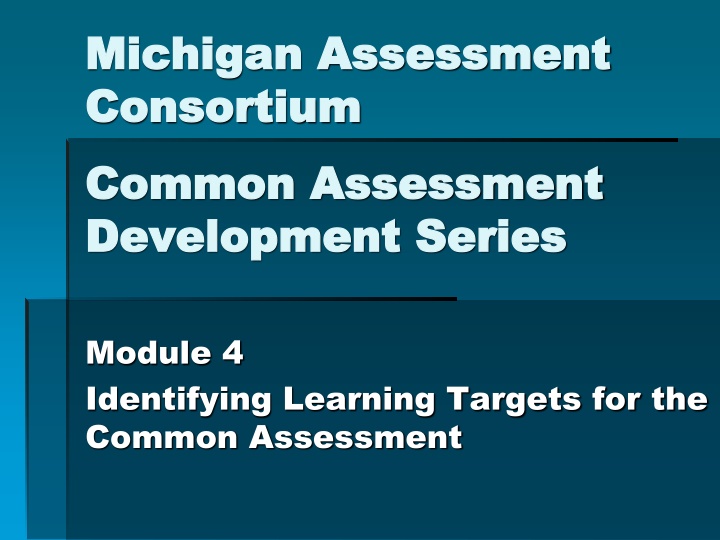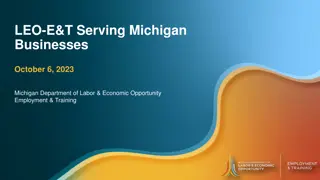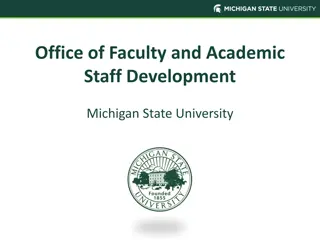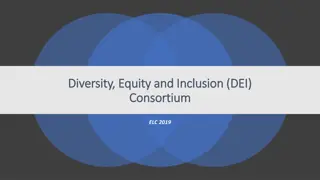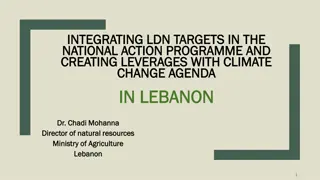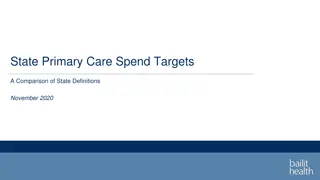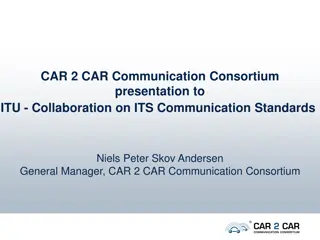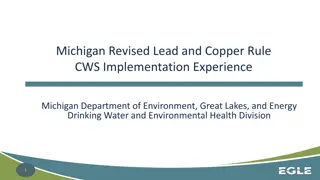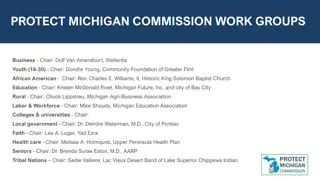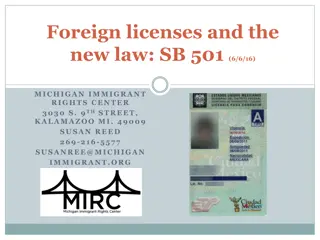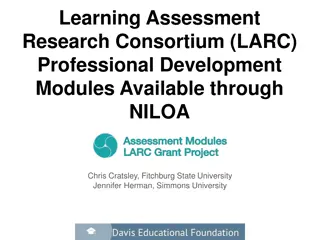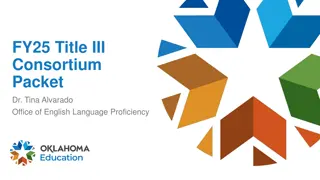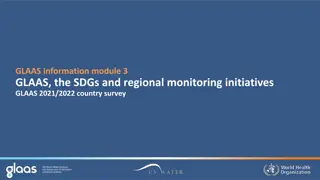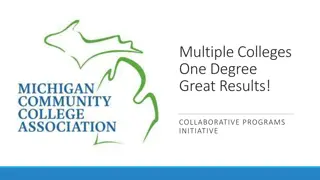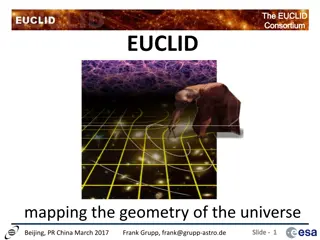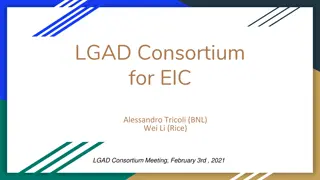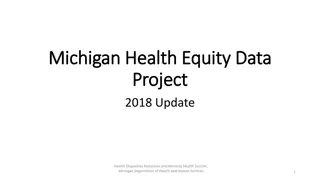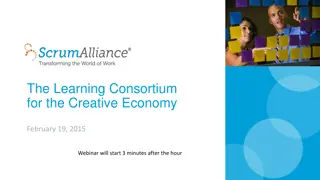Identifying Learning Targets Michigan Assessment Consortium Development Series
This module focuses on effectively identifying learning targets for the common assessment. It covers strategies and techniques to pinpoint key learning goals that align with assessment objectives, ensuring a comprehensive evaluation process. By mastering the skill of target identification, educators can enhance assessment precision and student performance.
Download Presentation

Please find below an Image/Link to download the presentation.
The content on the website is provided AS IS for your information and personal use only. It may not be sold, licensed, or shared on other websites without obtaining consent from the author.If you encounter any issues during the download, it is possible that the publisher has removed the file from their server.
You are allowed to download the files provided on this website for personal or commercial use, subject to the condition that they are used lawfully. All files are the property of their respective owners.
The content on the website is provided AS IS for your information and personal use only. It may not be sold, licensed, or shared on other websites without obtaining consent from the author.
E N D
Presentation Transcript
Michigan Assessment Michigan Assessment Consortium Consortium Common Assessment Common Assessment Development Series Development Series Module 4 Identifying Learning Targets for the Common Assessment
Narrated by: Narrated by: Kathy Dewsbury-White Ingham Intermediate School District 2
In the Previous Modules, In the Previous Modules, You Learned: You Learned: What are common assessments? What are the purposes and outcomes of common assessments? 3
A Good Assessment is Accurate A Good Assessment is Accurate & Used Effectively & Used Effectively Accurate Clear Purpose Effective Sound Communication Clear Targets Involves Student/Learner Sound Design 4
In This Module, You Will In This Module, You Will Learn: Learn: It s important to assess standards/targets you know are important and not just easy to assess. Criteria to help you select learning targets to measure in your common assessment. 5
Choose to Assess Standards Choose to Assess Standards that are Important & that are Important & Standards Reflecting 21 Standards Reflecting 21st Century Demands Century Demands st 6
Standards and Our Changing Standards and Our Changing Economy Economy Because the world of work is changing, which of the following categories of skill is disappearing from the work-place most rapidly? 1. Routine manual 2. Non-routine manual 3. Routine cognitive 4. Complex communication 5. Expert thinking/problem-solving 7
What are your observations? What are your observations? Autor Autor, Levy & , Levy & Murnane Murnane 2003 2003 8
Low skill jobs are vanishing Low skill jobs are vanishing Beyond Beyond Leitch Leitch (Patel et al., 2009) (Patel et al., 2009) 9
Curriculum Imperative Curriculum Imperative The dramatic changes taking place in the economy jeopardize the economic future of students who leave high school without the problem-solving and communication skills essential to success in postsecondary education and in the growing number of high-paying jobs in the economy. To back away from education reforms that help all students master these skills is to give up on the commitment to equal opportunity for all. -- Levy & Murnane, 2004 10
Implications for selection of Implications for selection of standards to assess standards to assess The one really competitive skill is the skill of being able to learn. It is the skill of being able not to give the right answer to questions about what you were taught in school, but to make the right response to situations that are outside the scope of what you were taught in school. We need to produce people who know how to act when they are faced with situations for which they were not specifically prepared. Papert, 1998 11
Standards and Our Changing Standards and Our Changing Technologies Technologies For many reasons, we continue to conduct school in a manner that was designed for 19th and 20th century learners. But 21st century literacies (brought on by technology, globalization accelerated rates of change) suggest a reformulation 12
What will it take to assess What will it take to assess 21st Century 21st Century Literacies Literacies? ? 13
What will it take to assess What will it take to assess 21st Century 21st Century Literacies Literacies? ? Words & phrases - suggesting 21st literacies Artistic Implications for Assessment Synthesis Context Multilingual Ingenious etc. 14
Standards that are College Standards that are College Career Career and and Citizen Ready Citizen Ready 1. critical thinking/problem solving 2. collaboration/leading by influence 3. agility and adaptability 4. initiative and entrepreneurialism 5. effective oral and written communication 6. accessing and analyzing information 7. curiosity and imagination 7 Survival Skills, Tony Wagner The Global Achievement Gap schoolchange.org
A cautionary tale or a call to A cautionary tale or a call to action? action? To teach and test the skills that our students need, we must first redefine excellent instruction. It is not a checklist of teacher behaviors and a model lesson that covers content standards. It is working with colleagues to ensure that all students master the skills they need to succeed as lifelong learners, workers, and citizens. I have yet to talk to a recent graduate, college teacher, community leader, or business leader who said that not knowing enough academic content was a problem. In my interviews, everyone stressed the importance of critical thinking, communication skills, and collaboration. We need to use academic content to teach the seven survival skills every day, at every grade level, and in every class. And we need to insist on a combination of locally developed assessments and new nationally normed, online tests such as the College and Work Readiness Assessment www.cae.org) that measure students analytic-reasoning, critical-thinking, problem-solving, and writing skills. It s time to hold ourselves to a newer and higher standard of rigor, defined according to 21st-century criteria. It s time for the profession to advocate for accountability systems that will enable us to teach and test skills that matter most. 16
Moral of the Story Moral of the Story If we assess what we value, what we value needs to be what prepares students for their future. 17
Criteria to Guide Selection of Criteria to Guide Selection of Standards/Targets for the Standards/Targets for the Common Assessment Common Assessment Important Leverage Appropriate Clear Measureable Balance 18
Criterion Criterion - - Important Important Will mastering this standard/target be worthwhile to the students future? Is the standard or target important to the discipline? 19
Criterion Criterion - - Leverage Leverage Do these standards/targets represent the knowledge or skills that students will need to be successful in the next unit, quarter, or grade? Does the standard or target represent necessary enabling knowledge or skills in the discipline? 20
Criterion Criterion - - Appropriate Appropriate What information, or evidence, do we need now (at this point in time) to understand what students know and can do? 21
Appropriate Targets = Useful Appropriate Targets = Useful Information at a Given Point in Information at a Given Point in Time Time (Table 4.1) (Table 4.1) Type Type Purpose Purpose When When What Information What Information Big ideas, complex ideas/understanding, big skills important to discipline End of Course What can students do, what do they know as result of a full End of Course End of Course End of Course or Final Exam or Final Exam What can students do, what do they know as result of a full course course What do students already know or where are the gaps/holes. Usually informs instruction Big ideas, complex ideas/understanding, big skills important to discipline Background knowledge &/or beliefs, misconceptions. Pre-assessment Pre-assessment Beginning of course, unit, year. Student new to What do students already know or where are the gaps/holes. Usually informs instruction Planning &/or placement information for teacher, student, other Beginning of course, unit, year. Student new to content/class. content/class. As needed Background knowledge &/or beliefs, misconceptions. Diagnostic Diagnostic Enabling knowledge/skills important along a continua to Planning &/or placement information for teacher, student, other Determine if progress is occurring as expected (at expected rate of acquisition) or check on more discrete/specific set of knowledge &skills As needed Enabling knowledge/skills important along a continua to mastery mastery Assess ideas and skills that contribute to big ideas and skills. Information/evidence could be be more discrete and in-depth Interim End of units or End of skill Interim Benchmark Benchmark Determine if progress is occurring as expected (at expected rate of acquisition) or check on more discrete/specific set of knowledge &skills End of units or End of skill sequence sequence Assess ideas and skills that contribute to big ideas and skills. Information/evidence could be be more discrete and in-depth 22
Criterion Criterion - - Clear Clear Have we deconstructed or unpacked standards in order to turn a standard into a clear target? Is the target in language the student/ learner understands? 23
Deconstructing Standards Deconstructing Standards Sample Standard -Produce writing to communicate with different audiences for a variety of purposes Sample Deconstruction (at identified grade level) Product(s) required? Skills required? Reasoning required? Knowledge required? Dispositions required? 24
Targets in Student Friendly Targets in Student Friendly Language Language Drive a car skillfully Deconstructed Target Know the law Understand the rules of the road Evaluate am I safe and synthesize information to take action. Drive a car skillfully I can statement conversion I can explain the laws about driving. I can read traffic signs and I can describe what they mean. I can decide what to do next based on my understanding of how cars work, what other drivers are doing and road conditions. When in danger I can figure out how to reduce danger. Perform these driving actions automatically (steer, merge, ) I can keep the car going in the right direction when steering. I can merge smoothly and at the right time. I can drive well without having to think about my every move. 25
When students know what they are learning, their performance on the average has been shown to be significantly higher (up to 27 percentage points) than that of students who do not know what they are learning. Marzano, 2005 26
Criterion Criterion - - Measureable Measureable Are the standards/targets we have selected to assess measureable? Clear (type of thinking required is evident in verb choice). If multiple expectations are in one target assessment reflects multi expectations Assessment method matches target type 27
Making Targets Measureable Making Targets Measureable Table 4.2 Table 4.2 Target Type Verbs (samples) Method Match (sample-efficient/effective) Knowledge Know, list, describe, identify, comprehend, recognize, understand Selected response Constructed response/Essay, Reasoning Predict, infer, classify, summarize, evaluate, hypothesize, generalize Selected response, CR/essay, performance assessment, personal communication Skills Measure, participate, use, demonstrate, pronounce, collect Performance assessment, personal communication Create Product Performance Construct, develop, create, write, demonstrate CR/essay, performance assessment, personal communication Dispositions Desire, like choose, persevere, Selected response, CR/essay, performance assessment, personal communication 28
Criterion Criterion - - Balance Balance Have we selected a collection of learning targets that include a variety of types? 29
Summary Summary 1. Assess standards that are important and reflect 21st century demands. 2. Apply a set of criteria to your selection of standards/targets to assess 30
Series Developers Series Developers Kathy Dewsbury White, Ingham ISD Bruce Fay, Wayne RESA Jim Gullen, Oakland Schools Julie McDaniel, Oakland Schools Edward Roeber, MSU Ellen Vorenkamp, Wayne RESA Kim Young, Ionia County ISD/MDE 31
Development Support for the Development Support for the Assessment Series Assessment Series The MAC Common Assessment Development Series is funded in part by the Michigan Association of Intermediate School Administrators In cooperation with Michigan Department of Education Ingham and Ionia ISDs, Oakland Schools, and Wayne RESA Michigan State University 32
